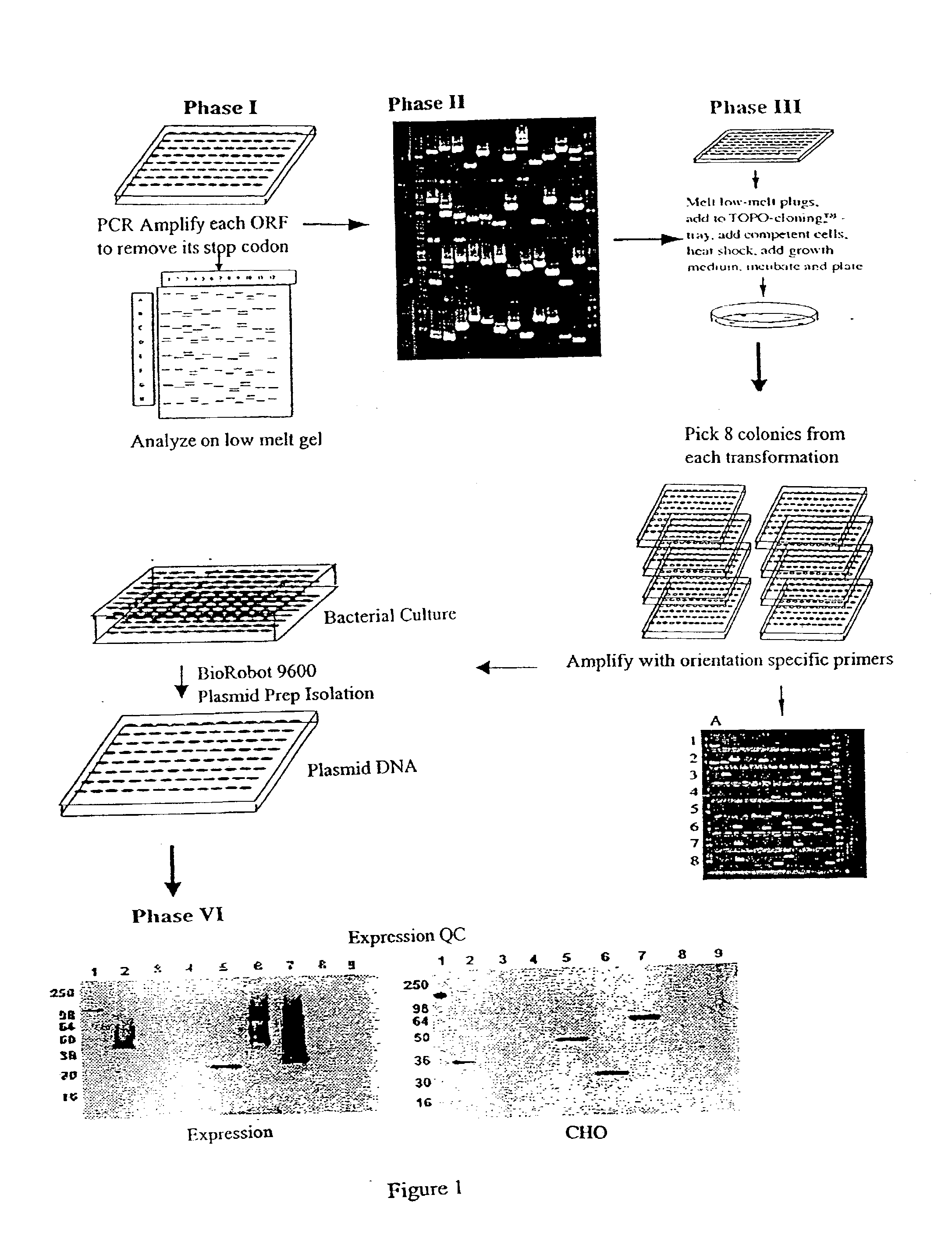Methods for producing libraries of expressible gene sequences
a gene sequence and gene technology, applied in the field of gene and molecular biology, can solve the problems of relatively time-consuming process, inability to fully realize the benefits, etc., and achieve the effect of efficient and convenient production
- Summary
- Abstract
- Description
- Claims
- Application Information
AI Technical Summary
Benefits of technology
Problems solved by technology
Method used
Image
Examples
example 2
High-throughput Expression of Human Gene Sequences
[0065] The following example illustrates the construction of a library of expressible human gene sequences using the method of the invention. Primers were constructed based on sequences of human genes available from GenBank.
[0066] Fetal human heart tissue was obtained from the International Institute for the Advancement of Medicine (IIAM). Poly A+nRNA was isolated using the FastTrack.TM. 2.0 Kit (Invitrogen, Carlsbad, Calif.) according to the manufacturer's instructions. The mRNA was converted to first-strand cDNA using a cDNA Cycle.RTM. Kit (Invitrogen) using the oligo dT primer provided and the protocols suggested. A single cDNA synthesis reaction was split into 12 separate wells of a 96-well PCR amplification plate, and PCR amplifications were performed using specific primer sets, essentially as described above, with the exception that the ratio of Taq to Pfu was 50:1 in the initial amplification (final conc. 2 U Taq:0.04 U Pfu / we...
example 3
Construction of Expression Plasmids
[0069] The following example illustrates the construction of the expression vectors used in the Examples above. Similar modifications can be made in other vectors for use in creating libraries of expressible gene sequences.
[0070] The vector pcDNA3.1 / V5-His was obtained from Invitrogen (cat #V810-20) and modified slightly so that it carried an gene sequence for Zeocin.TM. resistance and lacked the multiple cloning site. A 100.mu.g aliquot was suspended in 200 .mu.l medical irrigation (MI) water. A 5 .mu.l aliquot was saved for gel analysis. The remainder was transferred to a 1.7 ml Eppendorf tube. The vector was digested with HindIII (400 U) using Promega Buffer E (final volume=400 .mu.l). The reaction ran 3 hours at 37.degree. C. An aliquot was checked for completeness of digestion by running on an 0.8% agarose gel in 1X TAE, and visualizing with ethidium bromide.
[0071] The digested vector was treated with 200 .mu.l phenol / chloroform (pH7.5) accord...
PUM
| Property | Measurement | Unit |
|---|---|---|
| temperatures | aaaaa | aaaaa |
| temperatures | aaaaa | aaaaa |
| temperatures | aaaaa | aaaaa |
Abstract
Description
Claims
Application Information
 Login to View More
Login to View More - R&D
- Intellectual Property
- Life Sciences
- Materials
- Tech Scout
- Unparalleled Data Quality
- Higher Quality Content
- 60% Fewer Hallucinations
Browse by: Latest US Patents, China's latest patents, Technical Efficacy Thesaurus, Application Domain, Technology Topic, Popular Technical Reports.
© 2025 PatSnap. All rights reserved.Legal|Privacy policy|Modern Slavery Act Transparency Statement|Sitemap|About US| Contact US: help@patsnap.com

